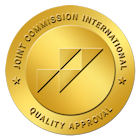Turn on the news or scroll through social media, and there’s a good chance that you’ll read something about the opioid epidemic. Although this epidemic is certainly not a secret issue, most people don’t realize just how huge the problem can be. Looking at the opioid crisis by the numbers gives you a realistic picture of the epidemic and how many millions of people it impacts each year.
Opioid Overdose Deaths are on the Rise
In 2015 alone, more than 20,000 individuals died because of a prescription opioid overdose. That’s in addition to roughly 13,000 people who died because of a heroin overdose. Clearly, opioid overdoses are a growing problem in the United States and around the world.
While there are drugs like naloxone that can stop an overdose from becoming fatal, there are simply too many people who are at risk. Once an overdose begins, it’s difficult or even impossible to react to the situation and seek out help. Loved ones can help by recognizing the signs of drug use and encouraging rehab and recovery.
Are Opioids Being Over-Prescribed?
Each year in America, a whopping 259 prescriptions are written for opioid drugs. While opioid painkillers do have a legitimate medical benefit in some cases, not all these prescriptions can be legitimate. That sky-high number means that there enough prescriptions were written for every single American to have one. One way to tackle the epidemic is by limiting the number of prescriptions altogether.
Opioid Addiction is an Issue for All Age Groups
Opioid abuse and addiction don’t discriminate. It can impact people of all ages, genders, and walks of life. In fact, a staggering 122,000 teens already have addictions to prescription opioids. This is in addition to teens that have heroin addictions.
Opioid Abuse Isn’t Slowing Down
Although there is lots of news coverage about the opioid epidemic, too many people believe that it couldn’t happen to them. As a result, lots of people abuse prescription opioids. Over two million people take prescription drugs that belong to others, save doses for the future or take more than their doctor recommends. This abuse can quickly become an addiction or even a fatal overdose.
Will the Opioid Crisis Get Worse Before it Gets Better?
Despite ongoing work to end the opioid epidemic, addiction rates, and overdose numbers are still a major concern. Some predictions even suggest that 500,000 Americans may die as a result of opioid drugs in the coming decade. It’s critical that we act now to address the crisis before it gets any worse.
You may not be able to solve the entire opioid crisis on your own, but you can tackle addiction in yourself or in a loved one. At Crestview Recovery, a rehab in Portland Oregon, you can fight back against opioid addiction once and for all. Call 866.262.0531 to learn about addiction counseling, rehab programs and the right path to recovery.
































